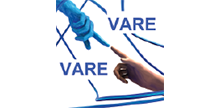Knowledge exchange using holograms in the Teaching Factory concept
- a Anna Karvouniari
- bDimitris Mavrikios
- cKosmas Alexopoulos
- d Konstantinos Georgoulias
- e Sotiris Makris
- f George Michalos
- g George Chryssolouris
- a,b,c, d,e,f,g Laboratory for Manufacturing Systems and Automation, University of Patras Department of Mechanical Engineering and Aeronautics, University of Patras, 26504, Patras, Greece
Cite as
A. Karvouniari, D. Mavrikios, K. Alexopoulos, K. Georgoulias, S. Makris, G. Michalos, G. Chryssolouris (2018). Knowledge exchange using holograms in the Teaching Factory concept. Proceedings of the 4th International Conference of The Virtual And Augmented Reality In Education (VARE 2018), pp. 78-82. DOI: https://doi.org/10.46354/i3m.2018.vare.013
Abstract
Industrial production systems as well as manufactured products are constantly evolving due to new technologies and customer demands. Towards ensuring an optimized co-evolution of both, the concept of Teaching Factory uses advanced ICTs and high-grade industrial didactic equipment to operate as a non geographically anchored learning “space”. In this context, we propose a novel collaborative framework utilizing holograms in aid of exchanging new technologies and manufacturing concepts between remotely located factories and classrooms in real time. The proposed approach will enable for the visualization of a complex CAD model or advanced tool in real dimensions in the laboratory, as well as the interaction with the holograms. From the industrial side, it will enable the use of simple mobile devices to navigate between components and views and display annotations. To support this setup, a prototype has been implemented and integrated involving a holographic system, a low-cost finger tracking device and a mobile device so as to exchange information in real time by intuitively manipulating CAD models during a live session.
References
- Abele, E., Metternich, J., Tisch, M., Chryssolouris, G., Sihn, W., ElMaraghy, H., Hummel, V. and Ranz,
F., 2015. Learning Factories for research, education, and training. Procedia CiRp, 32, pp.1-6. - Antoniou, S., Rentzos, L., Mavrikios, D., Georgoulias, K., Mourtzis, D. and Chryssolouris, G., 2016. A virtual reality application to attract young talents to manufacturing. Procedia CIRP, 57, pp.134-139
- Bonde, M. T., Makransky, G., Wandall, J., Larsen, M. V., Morsing, M., Jarmer,H., & Sommer, M. O. 2014. Improving biotech education through gamified laboratory simulations. Nature biotechnology, 32(7).
- CATIA™ 3DEXPERIENCE® - Dassault Systèmes® 3D Software, 2018, URI: https://www.3ds.com/products-services/catia/
- Chryssolouris G, Mavrikios D, Papakostas N, Mourtzis D, Michalos G, Georgoulias K (2008) Digital Manufacturing: History, Perspectives, and Outlook. Proceedings of the IMECHE Part B Journal of Engineering Manufacture 222:451–462
- Chryssolouris, G., 2013. Manufacturing systems: theory and practice. Springer Science & Business Media.
- Chryssolouris, G., Mavrikios, D. and Mourtzis, D., 2013. Manufacturing systems: skills & competencies for the future. Procedia CIRp, 7, pp.17-24.
- Chryssolouris, G., Mavrikios, D. and Rentzos, L., 2016. The teaching factory: a manufacturing education paradigm. Procedia CIRP, 57, pp.44-48.
- Chryssolouris, G., Mavrikios, G. and Rentzos, L., 2014. On a new educational paradigm for manufacturing: The Teaching Factory. In Proceeding of WPK Wiener Produktionstechnik Kongress).
- Dinkelmann, M., Riffelmacher, P., Westkämper, E. (2011). Training concept and structure of the Learning Factory advanced Industrial Engineering. In H. ElMaraghy (Ed.), Enabling Manufacturing Competitiveness and Economic Sustainability: Proceedings of the 4th International Conference on Changeable, Agile, Reconfigurable and Virtual Production CARV 2011 (pp. 624-629). Montreal.
- Eseryel, D., Law, V., Ifenthaler, D., Ge, X., & Miller, R. (2014). An investigation of the interrelationships
between motivation, engagement, and complex problem solving in game-based learning. Journal of
Educational Technology & Society, 17(1), 42-53. - Eurostat (2013). Science, technology and innovation in Europe. Eurostat Pocketbook.
- Hanushek, E.A., Wößmann, L., Jamison, E.A. and Jamison, D.T., 2008. Education and economic
growth. Education Next, 8(2). http://www.manufuture.org/wp content/uploads/Manufuture-Technology-PlatformBrochure.pdf - Ifo Institute, Cambridge Econometrics, Danish Technological Institute (2012). Study on the
Competitiveness of the EU Mechanical Engineering Industry. Final Report. - IMF (International Monetary Fund) (2013). World Economic Outlook – Hopes, Realities, Risks,
World Economic and Financial Survey. International Monetary Foundation - Leap Motion., 2018. Leap motion controller. URl: https://www.leapmotion.com
- Mavrikios, D., Georgoulias, K. and Chryssolouris, G., 2018. The Teaching Factory Paradigm:
Developments and Outlook. Procedia Manufacturing, 23, pp.1-6. - Mourtzis, D., 2018, June. Development of Skills and Competences in Manufacturing Towards Education
4.0: A Teaching Factory Approach. In International Conference on the Industry 4.0 model for Advanced Manufacturing (pp. 194-210). Springer, Cham - Mourtzis, D., Vlachou, K., Dimitrakopoulos, G., Zogopoulos, V., 2018, Cyber-physical systems and Education 4.0: The Teaching Factory 4.0 concept, In 8th Conference on Learning Factories: Advanced Engineering Education and Training for Manufacturing Innovation (CLF 2018)”, Vol. 23, pp. 129–134, DOI:https://doi.org/10.1016/j.promfg.2018.04.005
- Rentzos, L., Mavrikios, D. and Chryssolouris, G., 2015. A two-way knowledge interaction in manufacturing
education: The teaching factory. Procedia CIRP, 32, pp.31-35. - Rieber, L.P. (1992). Computer-based microworlds: a bridge between constructivism and direct instruction. Educational Technology Research and Development, 40(1), 93-106.
- Tether B, Mina A, Consoli D, Gagliardi D. Demand for Skills and How Do Skills Drive Innovation? A CRIC Report for The Department of Trade and Industry 2005
- Tisch, M., Hertle, C., Cachay, J., Abele, E., Metternich, J., Tenberg, R. (2013). A systematic approach on
developing action-oriented, competency-based Learning Factories. Procedia CIRP, 7, 580-585. - Wagner, U., AlGeddawy, T., ElMaraghy, H., Müller, E. (2012). The State-of-the-Art and Prospects of Learning Factories. Procedia CIRP, 3, 109-114.
- WEP, I.A., Industrial Internet of Things: Unleashing the Potential of Connected Products and Services, World Eco. Forum Ind. Agenda (2015)
